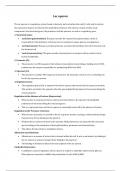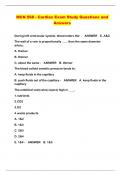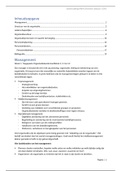Samenvatting
Summary Explanation of Difficult Concepts and Mechanism of 'Genetics' (AB_1135)
- Instelling
- Vrije Universiteit Amsterdam (VU)
In this document I explain, in detail, several difficult (at least in my opinion) concepts and mechanisms. Understanding these helped me pass the course with an 8. The following concepts and mechanisms are explained in the document: Lac operon, Trp operon, X-inactivation, DNA replication, DNA met...
[Meer zien]










